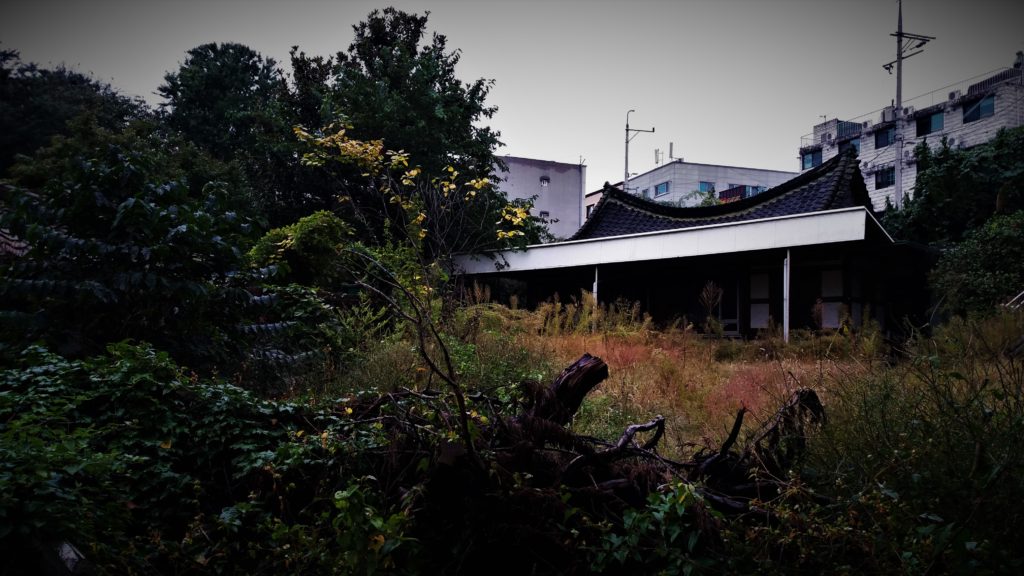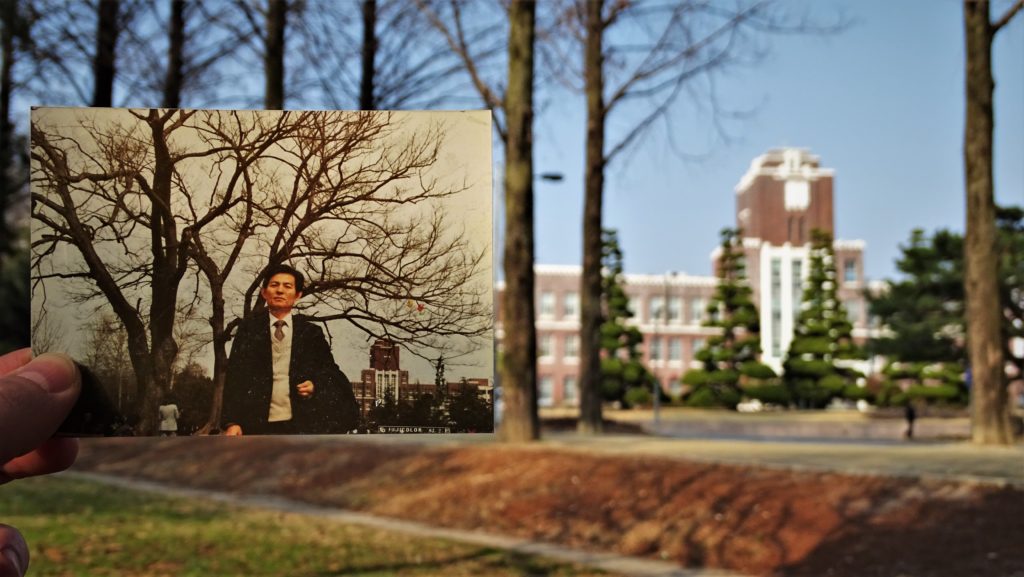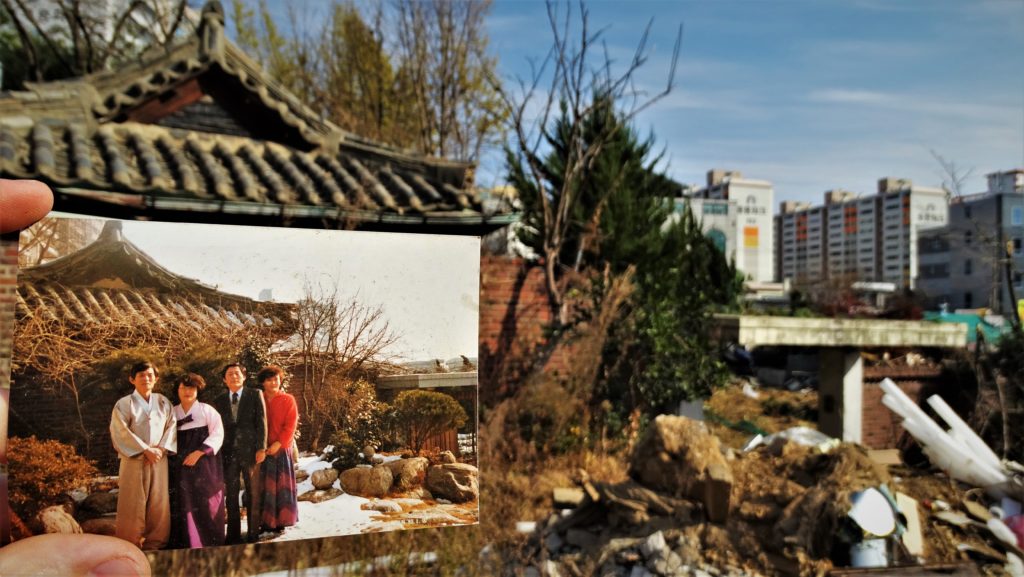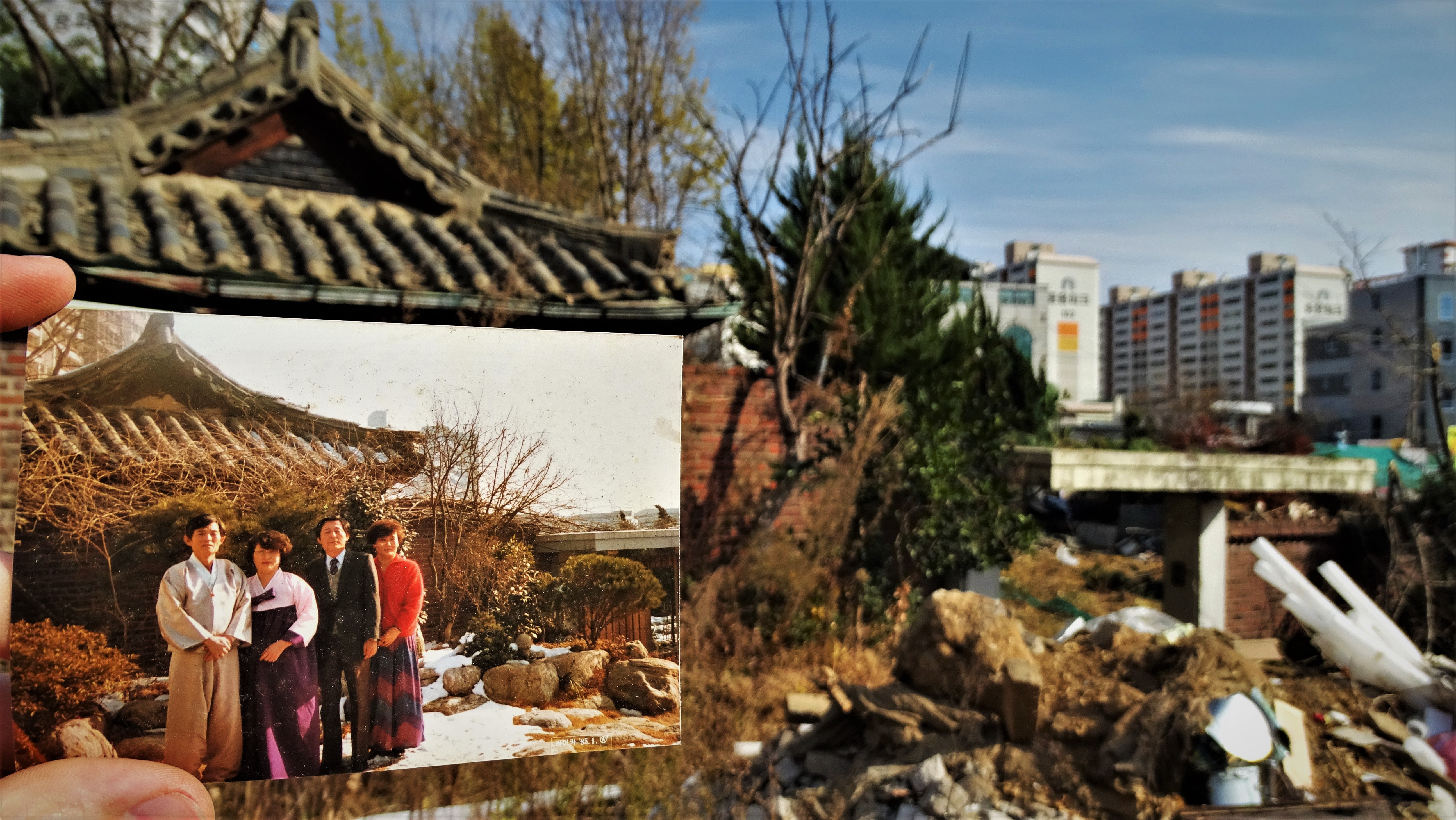Death of the Doctor’s Hanok
Written and photographed by Isaiah Winters
In the decades-long scramble to modernize, much of South Korea’s recent past has been razed with incredible haste. Today, the bulldozing of history continues unabated and can be seen regularly right here in Gwangju, where the swaths of wooden architecture that once blanketed the city have been reduced to a tiny few pockets of rot.
To put it bluntly, Gwangju is hemorrhaging its vintage structures.

Among the remaining few, a personal favorite was (until very recently) situated in the north of Hwajeong-dong, just a stone’s throw from Geumho World. The hanok (traditional Korean-style house) on the property and the more contemporary hanok adaptation next door were part of a larger condemned neighborhood set to be replaced by apartment blocks.
Though gutted and ransacked, the properties maintained an indelible beauty, and a lot about their past could still be discerned from the many personal belongings strewn out front. At first, all the medical texts and equipment scattered about hinted at the homeowner’s occupation, as did a few aerial photos of Chonnam National University Hospital seen lying around. The many books written in both Japanese and English hinted at the homeowner’s age and suggested a life lived within two very different spheres of influence.
After digging a little deeper, a panoply of intimate family photos soon emerged from the clutter. The photos, most of which dated from the early to mid-1980s, were replete with the same clearly discernable family. Most astonishingly, some of the photos had been taken all those decades ago on the very spot where I’d found them caked with dirt and glass. Knowing how seldom a find this was, I wasted no time in lining up the living past with its lifeless present.

Photos of every moment you’d expect a family to cherish were there, including a dol-janchi (first birthday party), weddings, multi-generational family gatherings, and even a Christmas party during the paterfamilias’ military stint. On the back of one wedding photo was a rather tender handwritten message about how the ceremony went, including how many people attended and what kind of food was served.
From what evidence the site offered, the patriarch seemed to have been either a professor or doctor associated with Chonnam University, though it’s hard to say for sure. An associate of mine with a long history at Chonnam University couldn’t identify anyone in the photos, nor could any of his colleagues. Ergo, the family in question will have to remain an enigma for now.
Another mystery is why a family sentimental enough to take a bevy of intimate photos over many decades would leave them all behind in the end. Were the next of kin just too busy to make it in time? Did the family leave South Korea all together years before? Or, God forbid, did the family break up over deep resentments, causing estrangement? When overwhelmed with more questions than answers, one can’t help but surmise the worst.

What’s more, how might the construction crew in charge of pulling down the old houses have felt? Was it a job like any other or did their hearts ache in the process? Did they approach the task like dispassionate wreckers or did they hesitate before setting to work? Sadly, Occam’s razor suggests the houses were treated no better than if they were a pair of failed convenience stores.
Urban renewal can be an equal opportunity wrecking ball.
Then again, maybe it’s better for the health of the local community if most of these old structures are torn down. Many of the homes in this particular neighborhood used horribly old corrugated roofing, which is known to contain asbestos. In fact, in the alleyways outside most homes, large coffin-sized stacks of said roofing could be seen wrapped in bright yellow hazmat tarp bearing asbestos warnings in both English and Korean.

Frankly speaking, it’s remarkable that a neighborhood so close to one of Gwangju’s major economic and transport nerve centers lingered on in such a crummy state for so long. The new apartments will certainly revivify the area, which has obviously been experiencing acute depopulation for some time. So, the neighborhood will indeed live on – just in a modern, sanitized form atop bulldozed history.
I have to admit that before leaving, I slipped a few of the photos into an old brochure from an event celebrating Chonnam National University Hospital’s 93rd anniversary back in 2003. The yellowed brochure sits on my desk today, though I have no idea what I’ll do with the photos inside. Perhaps I’ll keep them long enough that someone will later find them while rummaging through my belongings.
THE AUTHOR
Originally from Southern California, Isaiah Winters first came to Gwangju in 2010. He recently returned to South Korea after completing his M.A. in Eastern Europe and is currently the new chief proofreader for the Gwangju News. He enjoys writing, political science, and urban exploring.





